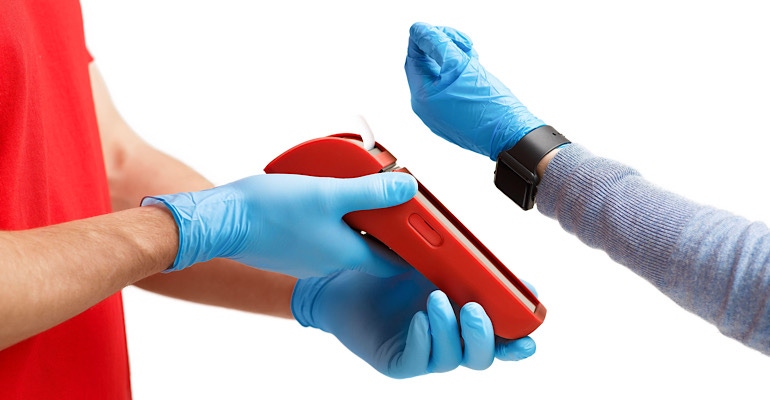Smartwatches Track Physiological Changes After COVID-19 Vaccination
Scripps researchers said the smartwatches detected an increase in heart rate days after the vaccine was administered.
April 25, 2022

A team at Scripps Research has used data from smartwatches and fitness bands to show responses in a wearer after receiving a COVID-19 vaccination. The study was part of its DETECT (Digital Engagement and Tracking for Early Control and Treatment) program that was launched in March 2020.
Using data on heart rate, sleep, and activity levels from more than 5,600 people who opted into the research, Scripps found that physiologic changes such as increased resting heart rate were recorded in the days after vaccination. These changes are thought to potentially be associated with an immune response, though further research is needed.
“We analyzed the data after vaccination to try to understand physiologically what is happening on an individual basis,” said Giorgio Quer, PhD, director of Artificial Intelligence at the Scripps Research Translational Institute. “Our resting heart rate is very constant over the year. A significant change of even a few beats per minute over several days means something.”
Changes in resting heart rate
Every individual has normal changes in physiology throughout their life due to activity, stress, or exercise, which can reduce resting heart rate. However, Quer explained, looking at the data longitudinally, changes in a short period could indicate a change in the body that could be associated with an immune response or infection.
The smartwatch research, published in npj Digital Medicine, compared two weeks of physiological data before vaccination in order to estimate a baseline for each individual and the effect after vaccination for an additional two weeks. Data indicated that resting heart rate jumped the day after vaccination, reaching its highest rate two days after and returning to individual baseline four days later with the first dose, and six days after the second vaccination.
While the published study captures the time around vaccination, data was gathered earlier in the pandemic and continues to be monitored for patients who have chosen to still participate, providing a long-term look at data. “After they consented, we have a way to monitor an individual passively and longitudinally,” said Quer. “The individual does not need to do anything they just wear their smartwatch as they were doing before, and the app takes care of getting the data from the smartwatch and sending it to the secure server for analysis...This is longitudinal, it is not a finite couple of weeks but it continues to gather data until the individual decides to stop.”
Public health implications
Research of this kind could help to monitor public health as well as watch for changes that could indicate infection of COVID-19, seasonal flu, or other diseases on an individual basis. The data can also help individuals see how they responded to vaccination, and how populations respond. During the study, variations in vaccination response were noted depending on vaccine manufacturer, gender, and age, with women and those under 40 years of age having a greater change in resting heart rate, the latter particularly with the second dose.
DETECT research, which includes a total of about 40,000 participants, is ongoing. The research will focus on the potential to use the data and machine learning to detect infection with COVID-19 and physiologic changes due to long COVID. The program has received funding from the NIH’s National Center for Advancing Translational Sciences (UL1TR002550) and National Institute of Allergy and Infectious Diseases (U19AI135995).
About the Author(s)
You May Also Like


